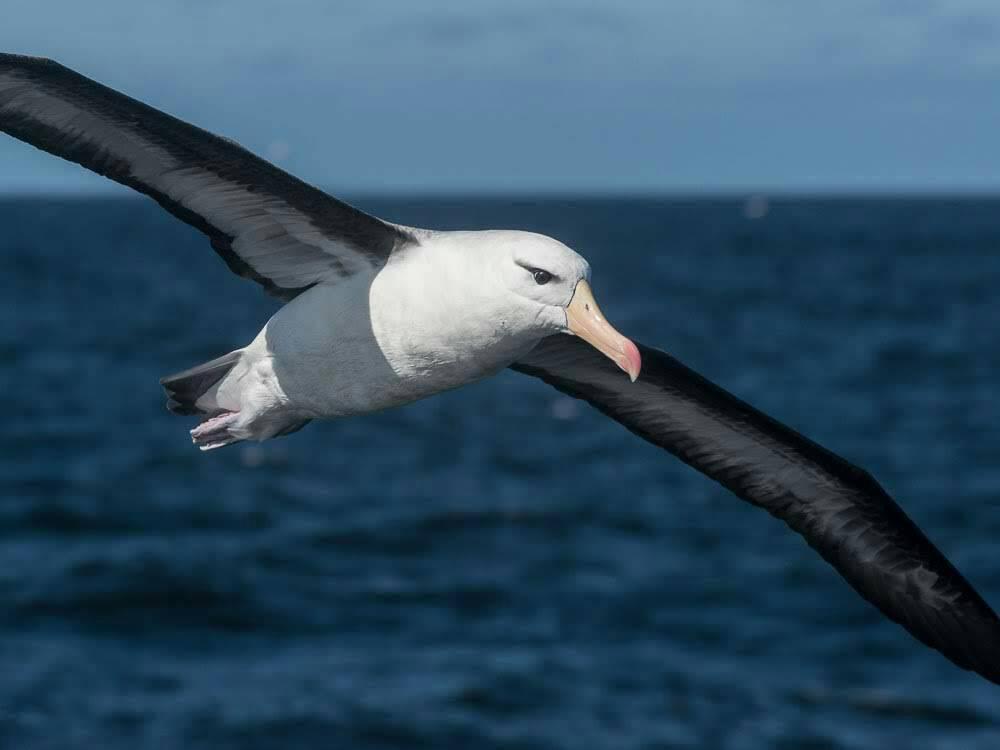
Black-browed Albatross at sea, photograph by Marcos de Campo
Jesica Andrea Paz (Instituto de Investigaciones Marinas y Costeras, Universidad Nacional de Mar del Plata, Argentina) and colleagues have published in the journal Emu - Austral Ornithology on the absence of sexual segregation in Black-browed Albatross Thalassarche melanophris at sea in the south-west Atlantic.
The paper’s abstract follows:
“Sexual segregation in habitat use occurs when sexes differ in their use of the physical environment and is widely reported among seabirds. The Black-browed Albatross (Thalassarche melanophris) is one of the most abundant seabird species in the south-west Atlantic, but whether the sexes differ in their habitat selection during winter remains unknown. Here, we tested for sexual segregation in adult and immature Black-browed Albatrosses during winter. Movement data from 21 satellite-tracked Black-browed Albatrosses across the south-west Atlantic Ocean between 2011 and 2015 were used to determine suitable foraging habitat for males (n = 7) and females (n = 14) using habitat selection models. Sexual segregation was then assessed using an index of niche overlap for immature and adult age classes. Variables with the highest importance in habitat selection models across all groups were depth and sea surface temperature. The highest probabilities of occurrence were in shallow waters and intermediate surface temperatures. No sexual segregation was found which may be because of the large abundance of prey in the region and moderate energy requirements during the non-breeding season. These results are relevant for spatially explicit conservation management in this region, including the designation of marine protected areas. Indeed, bycatch in fisheries is a major threat to seabirds in this area, and foraging behaviour and performance in winter of this keystone species will influence their future reproductive performance.”
Reference:
Paz, J.A., Seco Pon, J.P., Krüger, L., Favero, M. & Copello, S. 2021. Is there sexual segregation in habitat selection by Black-browed Albatrosses wintering in the south-west Atlantic? Emu – Austral Ornithology doi.org/10.1080/01584197.2020.1869910.
John Cooper, ACAP Information Officer, 03 February 2021

 Español
Español  English
English  Français
Français